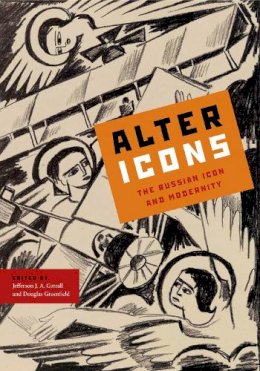
Alter Icons: The Russian Icon and Modernity
Jefferson Gatrall
Passage into the modern world left the Russian icon profoundly altered. It fell into new hands, migrated to new homes, and acquired new forms and meanings. Icons were made in the factories of foreign industrialists and destroyed by iconoclasts of the proletariat. Even the icon’s traditional functions—whether in the feast days of the church or the pageantry of state power—were susceptible to the transformative forces of modernization. In Alter Icons: The Russian Icon and Modernity, eleven scholars of Russian history, art, literature, cinema, philosophy, and theology track key shifts in the production, circulation, and consumption of the Russian icon from Peter the Great’s Enlightenment to the post-Soviet revival of Orthodoxy. Alter Icons shows how the twin pressures of secular scholarship and secular art transformed the Russian icon from a sacred image in the church to a masterpiece in the museum, from a parochial craftwork to a template for the avant-garde, and from a medieval interface with the divine to a modernist prism for seeing the world anew.
In addition to the editors, the contributors are Robert Bird, Elena Boeck, Shirley A. Glade, John-Paul Himka, John Anthony McGuckin, Robert L. Nichols, Sarah Pratt, Wendy R. Salmond, and Vera Shevzov.
Product Details
About Jefferson Gatrall
Reviews for Alter Icons: The Russian Icon and Modernity
